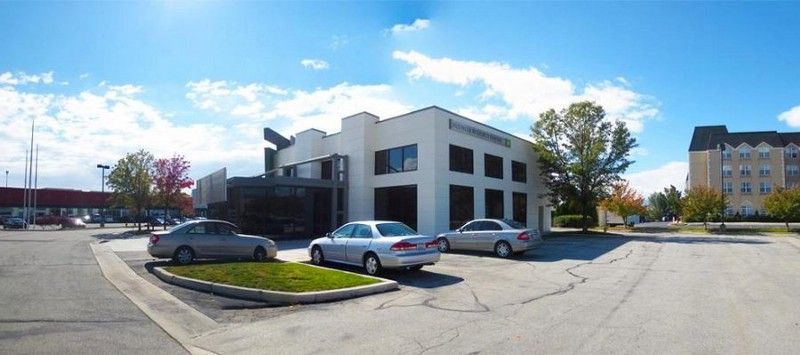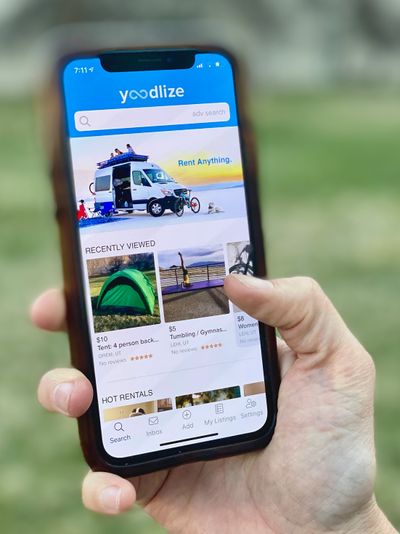There’s a lot of good programs out there, but this is a great place for entrepreneurs to start.
Sitting in an office on the first floor of what used to be a Saturn dealership in Orem, Roger Andrus, Director of Utah Valley University’s Business Resource Center, described the impact the new center is having on entrepreneurs and business development along the Wasatch Front.
“We run a process-driven accelerator with access to mentors and space,” explained Andrus. “We have a four-phase process we put companies through. The process helps any kind of company. Whether they just have an idea, or they’re more established and just need more help.”
There are currently more than 160 companies going through the BRC’s Go-To-Market Accelerator program. UVU describes the program on their website as “a process-driven system designed to help new entrepreneurs validate big ideas and help existing business owners re-connect with their customers.”
Don’t think you have to be a student at UVU in order to participate in the program. In fact, during a tour of the building, Andrus pointed to just one area reserved for UVU students. The rest of the 24,842-square-foot facility is dedicated to helping entrepreneurs and companies within the community.
When Gov. Gary Herbert attended the ribbon-cutting ceremony last January, he said, “70 percent of the space here is going to be dedicated to startups, to incubator-type businesses to help start them and accelerate them and give them every opportunity, as we have fledgling new businesses.”
The BRC’s Go-To-Market Accelerator program is unique in a lot of ways, but the one that stands out the most is the cost. It’s a free program. On top of that, unlike other accelerators, the BRC doesn’t take any equity or ownership in the companies they help mentor.
So, what’s in it for UVU? The school has been positioning itself as an engaged learning institution for some time now. The BRC perfectly defines the concept of engaged learning. UVU’s philosophy behind the center is simple: If they can help Utah entrepreneurs grow and be successful, then those entrepreneurs will hire more people, and the local economy will continue to grow.
“That’s why we’re doing it,” said Andrus. “To grow the economy, and to create jobs.”
![]()
The BRC views itself as a one-stop-shop for accelerating the growth of ideas and companies. The value of their Go-To-Market Accelerator program lies within their four phases of growth.
Phase One: Is the idea good?
Andrus believes the typical entrepreneur comes up with an idea, talks to their close friends about the idea’s validity, raises a little bit of money, and then expects the idea to take off and to make millions of dollars.
“The problem with that model — and it’s been the model for a long time now — is nowhere in there did the startup involve their customers,” said Andrus. “They may have talked to some people, but it’s usually the people they trust, like their family and friends. It’s rare for a startup to actually talk to their customers.”
The first phase of the program is all about customer validation.
“What we do is have them put together a hypothesis of what they think the problem is in the market, and they go out and talk to actual customers, and get the customer’s response about whether the idea helps to solve a problem worth solving,” said Andrus. “They find out from potential customers whether their idea is of value to them; and if the entrepreneur did build the product, whether the customer would actually buy it.”
Preferably an entrepreneur or startup has already done customer validation before they’ve written a single line of code, or started to build a product designed to solve a specific problem in a certain market. If they haven’t, Andrus encourages them to do what he calls a “market realignment,” which forces them to go out and do what they missed the first time: customer validation.
In the book “Nail It Then Scale It,” which is required reading for anyone wanting to enter the Go-To-Market program at the BRC, one of the questions authors Nathan Furr and Paul Ahlstrom ask is whether the problem you’re solving is a mosquito bite, or a shark bite.
“Of course if it’s a shark bite type pain, the customer needs it right away, and they’re willing to pay for it at almost any cost,” said Andrus. “Whereas if it’s a mosquito bite, while it may be irritating, it’s not enough for them to move on it.”
The BRC asks entrepreneurs to go out into the marketplace and ask customers whether the problem they’re trying to solve is a shark bite, or a mosquito bite. If you happen to come across a shark bite, the BRC helps you to do everything you can to reel it in as quickly and as smartly as possible.
Andrus said one of the companies that went through the Go-To-Market program found a niche with a problem so big the company’s customers are actually paying them to build the solution.
“If it’s a big enough problem, customers are willing to partner with startups to help with the development costs,” said Andrus.
Phase Two: Is the Business Model Viable?
The BRC doesn’t ask entrepreneurs to come up with a business plan in this phase because they don’t think it’s an effective approach. They ask entrepreneurs to go out and put together a business model based on revenues and cost structures, which then flows into putting together a financial model. Companies are also working on prototypes during this phase.
Most of what the BRC teaches entrepreneurs during Phase Two comes from the writings of Steve Blank and Alexander Osterwalder.
Phase Three: Can you execute?
In this phase, entrepreneurs are developing pilot customers, getting testimonials, and procuring collateral. They’re also making sure their organization and operations are set up correctly.
“My personal philosophy is it doesn’t matter how many patents, Ph.D’s, or lines of code a company has,” said Andrus. “What it really comes down to is can they create and keep customers. Our program is designed for companies to do just that.”
Phase Four: Can You Scale?
The BRC has partnered with UtahTech-X, a revenue accelerator designed to empower companies with cutting edge tools and methodologies to accelerate their growth. Andrus is also the Executive Director of UtahTech-X.
Phase Four is designed to solve three of the biggest problems companies face:
-
Generate more leads.
-
Close more business.
-
Keep more customers.
UtahTech-X is a community outreach program. There’s a 12-week application process entrepreneurs must follow in order to get accepted. Like the Go-To-Market program, TechEx is free.
“Companies go through it for free,” said Andrus. “Mentors will work with them one-on-one to optimize their top line.”
As the former Executive Director of the UtahAngels, Andrus understands what it takes for companies to get funding.
“What funders look for, very basically, is sales traction,” explained Andrus. “What we’re trying to do is help companies get the traction they need to be successful. Ideally, we think their best source of funding is from their customers. If they need funding, they get funding to service their customers, as opposed to just taking a big chunk of money and hoping it all works out. We’re preparing them for funding, so they can be attractive to bigger pools of money.”
70 companies have already went through the UtahTech-X program. Andrus estimates those 70 companies will generate over $80 million in combined revenue this year, which works out to be a 50% increase from when they first started with UtahTech-X. Those 70 companies employ over 700 people. In a survey, those 70 companies were asked to rate the value of UtahTech-X on a scale from 1 to 10. UtahTech-X received an overall score of 8.2.
There are a number of local companies currently going through the Go-To-Market program at UVU’s BRC. A few of those companies — ForeUp, Sprint Marketing, SpeakWorks, DemoChimp, and Shipzi — even have offices in the BRC building. Most companies going through the program, however, do not rent space from the center.
One recognizable company that went through the BRC’s Go-To-Market program is Kisstixx, a Salt Lake City startup that was recently featured on ABC’s “Shark Tank.”
“Our mantra is to seek out the most promising entrepreneurs, products, and services, and help accelerate their access to money, markets, and mentors,” said Andrus. “There’s a lot of good programs out there, but this is a great place for entrepreneurs to start.”
Published 12/10/2013






